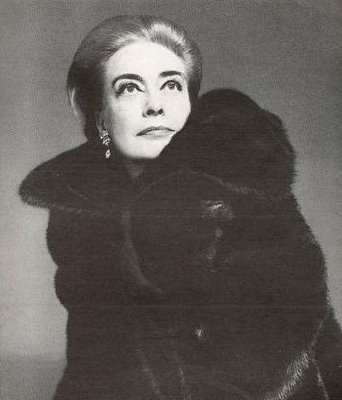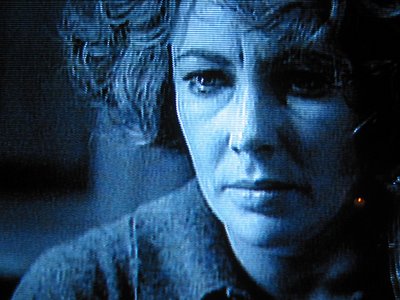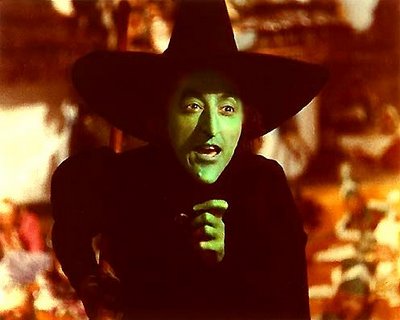Wednesday, August 30, 2006
Tuesday, August 29, 2006
TINA TURNER

Young Anna Mae started working with Ike Turner in 1958. Ike changed her stage name to Tina Turner. They later married in 1962. She began as an occasional vocalist in his show at the age of 18, but within a couple of years she not only had a new name, but was the spotlight of a popular soul revue led by Ike Turner and his Kings of Rhythm.
When a singer was scheduled to record the famous R&B song, "A Fool In Love", didn't appear, Tina stepped in and recorded the song instead. "A Fool In Love" was a huge R&B hit, and it crossed over and made it into the top 30 of the U.S pop chart. After this, Ike changed the name of his band to the Ike and Tina Turner Revue. Throughout the 1960s and into the 1970s Ike & Tina rose into superstardom. As times and musical styles changes, Tina developed a unique stage persona as a singer/dancer/performer that people very much enjoyed in live concert. Tina and the Revue's backup singers, The Ikettes, wove intricate and electifying dance routines into their performances, which influenced many other artists, including Mick Jagger (for whose Rolling Stones 1969 American Tour they opened). Ike and Tina Turner recorded a string of hits in the 1960s and early 1970s, including "A Fool In Love," "It's Gonna Work Out Fine," "I Idolize You," "Nutbush City Limits," and "River Deep - Mountain High" with producer Phil Spector in his Wall of sound style. They also carved out a successful niche for themselves by "covering" songs made popular by other artists, such as "Come Together", "Honky Tonk Woman", "I Want to Take You Higher". In fact, their signature hit became their high energy cover version of Creedence Clearwater Revival's 1968 "Proud Mary". "Proud Mary" was the duo's greatest commercial successes, peaking at number four in March 1971.
While many of their original recordings failed to chart, by the late 1960s and early 1970s the Ike and Tina Turner Revue was well known for their live act and electrifying television appearances. Their supporters included The Rolling Stones, David Bowie, Sly Stone, Janis Joplin, Cher, James Brown, Ray Charles, Elton John and Elvis Presley. They were always performing anywhere and everywhere. A one night gig at a small predomininately black supper club in the South could be followed up in the same week with a show at a major venue in Las Vegas or a national TV appearance. Ike acted as the groups' manager and lead musical director, calling all the shots and ruling the act (and Tina) with an iron hand. While a fine musician and an early rock and roll influence, Ike's control of the Revue's management, recording contracts and performances eventually led to their decline, as his drug abuse worsened. This controlling (and often violent) atmosphere caused the musicians and backup singers to frequently come and go, and Tina later reported being isolated and physically abused by Ike on a regular basis for most of their marriage.
Ike and Tina had one child together, born in 1960, although their extended family consisted of two older sons of Ike's from a previous relationship and a son whom Tina bore in 1958 by Raymond Hill, a onetime saxophone player in Ike Turner's band.
Friday, August 18, 2006
Thursday, August 17, 2006
Anthony Perkins: Split Image
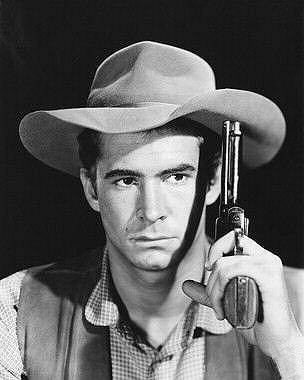
"I have learned more about love, selflessness and human understanding from the people I have met in this great adventure in the world of AIDS than I ever did in the cutthroat, competitive world in which I spent my life."
Anthony Perkins
(04/04/1932 – 09/12/1992)
US actor
Anthony Perkins (born April 4th, 1932 in New York, died September 12th, 1992 in Hollywood) was a US actor best known for his role as the maniacal murderer, Norman Bates, in Alfred Hitchcock's Psycho.
His first movie was The Actress (1953), then came Friendly Persuasion (1956), for which he received an Academy Award nomination.
After a few other much-acclaimed performances both in film and on Broadway, he starred in Psycho in 1960, which lead to him being typecast as the crazy killer, severely limiting the range of roles he was offered later in life.
He went on to star in (and even direct) the sequels and prequel to Psycho and also played a few memorable characters, such as the chaplain in Catch-22 (1970), but most of his later work were made-for-TV movies.
His private life was something of a mystery, while he had plenty of homosexual affairs, such as with Tab Hunter, Grover Helms, and Alan Dale, he was also married for 19 years to Berry Berenson.
It is a matter of speculation, whether Perkins was bisexual or gay, just using his marriage as a cover-up. His 1992 death of AIDS complications made many people think that the second explanation might be correct.
His son, Osgood Perkins, credited as Oz Perkins, is also an actor.
His widow, Berry Berenson, died on an airplane that crashed into the World Trade Center during the September 2001 Terrorist Attacks, the day before the nine-year anniversary of Perkins' death.
Paramount groomed him to replace the late James Dean and become Hollywood’s hottest heartthrob. But his landmark performance as Norman Bates in Alfred Hitchcock’s Psycho killed that—and spawned an image of Anthony Perkins that eerily paralleled his conflicted, fractured off-screen life.
Anthony Perkins: Split Image insightfully and comprehensively documents the life of this great actor, who was forced to act the part of ladies’ man while privately struggling with his own homosexuality—and his search for acceptance.
by JOHN GILMORE
My personal manager, Howard Austin, who was then handling Tony Perkins along with me was Gore Vidal's live-in secretary. They stayed together in Vidal's Upper East Side place. I often saw Tony Perkins in Gore's apartment. Once he came with an attorney who was helping him out of a vice jam.
Tony was on a day bed, wringing his hands and crying. After he had left, Howard told me about Tony's exploits in the subways and movie theaters. He couldn't stay out of the back rows and public men's rooms, and was in hot water for groping a cop staked out to collar "sex offenders." He told me Tony was anxious with that term - that he believed he was not an "offender." How on earth could he be a sex offender, he said, when the other party was asking for it?
Tuesday, August 15, 2006
Monday, August 14, 2006
JOAN CRAWFORD she was horrified.

Joan's public and private lives began to constrict in 1973. One of her last public appearances was in April of that year at New York City's Town Hall, in a "Legendary Ladies" event hosted by John Springer, where she answered questions from Springer and the audience. That same month, the new head of Pepsi-Cola, with whom she'd had an antagonistic relationship since Al Steele's death, forcibly retired her from the company's board of directors after her 18 years of service for Pepsi. In September of '73, financial considerations forced Joan to take a smaller apartment in the Imperial House, where she'd lived since the mid-60s.
September 23, 1974, was Joan's final public appearance, in an event at NYC's Rainbow Room to honor Rosalind Russell. After seeing unflattering press photos of herself published the next day, she was horrified, saying "If that's how I look, they won't see me again." And the public didn't.
Joan reportedly gave up drinking in December of 1974 and rarely left her apartment after that year, though she wasn't a complete recluse; until the end of 1976 she would regularly visit with neighbors, and friends like editor Carl Johnes (who later published a warmly honest book about their relationship), publicist Michael Sean O'Shea, and makeup artist Monty Westmore, as well as her Christian Science practitioner Mrs. Markham, her longtime secretary, and her daughter Cathy and family. She also continued to speak to interviewers like Roy Newquist (who later published Conversations with Joan Crawford) and magazines such as Architectural Digest, which did a feature on her apartment in the fall of 1975.
By early 1977, though, even these contacts had mostly tapered off, as did her once-numerous phone calls to friends.
A sign that Joan herself recognized that her life was almost over came on May 8, when she gave away her beloved pet Shih Tzu. Two days later, on the morning of May 10, Joan Crawford died. Only her housekeeper and a longtime female fan were present. The coroner listed the cause of death as "acute coronary occlusion," but Joan had been noticeably wasting away for months and several sources list the actual cause of death as liver cancer. Suicide was also suspected because of the symbolic importance of the date---her and Al Steele's wedding anniversary. She was cremated and her remains interred at New York's Ferncliff Mausoleum, alongside those of Steele.
Sunday, August 13, 2006
Wednesday, August 09, 2006
Judy Garland A STAR IS BORN

Judy played Esther in the radio version of A Star Is Born, with Walter Pidgeon as Norman Maine. The show was broadcast on Lux Radio Theater on December 28, 1942.
Judy received an Academy Award nomination for Best Actress for her work in the film, but the award went to Grace Kelly for her work in The Country Girl. Judy received hundreds of conciliatory telegrams including one from Groucho Marx who said it was "the greatest robbery since Brink's".
Look magazine cited Judy as best actress of the year with its Look Annual Movie Awards, stating "The versatility and elegance that Judy Garland displays in A Star Is Born win her the Look Award for best actress of the year. In past films, Judy often revealed extraordinary talents as a variety artist and an actress potentially rich in both comedy and tragedy. These talents grow to full maturity in this "drama with music" and give her a place with the genuine artists who are wholly products of Hollywood training."
Critical Response
"Those who have blissful recollections of David O. Selznick's "A Star Is Born" as probably the most affecting movie ever made about Hollywood may get themselves set for a new experience that should put the former one in the shade...[George Cukor]...gets performances from Miss Garland and Mr. Mason that make the heart flutter and bleed."
- Bosley Crowther, The New York Times, October 12, 1954
"[Judy Garland]...gives what is just about the greatest one-woman show in modern movie history...she has never sung better...Her big, dark voice sobs, sighs, sulks and socks them out like a cross between Tara's harp and the late Bessie Smith...Everybody's little sister, it would seem, has grown out of her braids and into a tiara."
- Time, October 25, 1954
"A Star Is Born is best classified as a thrilling personal triumph for Judy Garland. As an actress Miss Garland is more than adequate. As a mime and comedienne she is even better. But as a singer she can handle anything from torch songs and blues to ballads. In more ways than one, the picture is hers."
- Newsweek, November 1, 1954
Monday, August 07, 2006
J A N I S
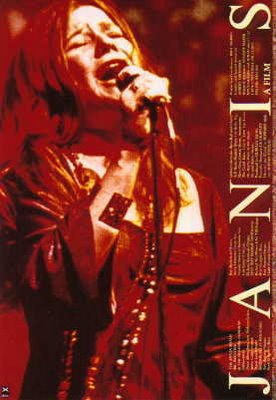
The Janis Joplin of legend set the standard for the blues mama image of white female singers. Blues mamas have to be hard-livin', hard-lovin' and, of course, hard drinking. But life in the Gulf Coast town was not exactly hard; like much of the town's population, Janis' father, Seth, worked at the Texaco refinery and the Joplins resided comfortably.
By all accounts, Janis had a happy childhood, but her entrée into womanhood was less than graceful. As a teenager, she tended to gain weight, her soft child-blond hair turned brown and unruly, and she developed acne that would scar as well as shape her looks and personality. She became an unwilling member of an elite club of misfits, a woman who avoided mirrors because of pitted reflections, knowing that the scars underneath caused by the ones on the surface are the most painfully inflicted. Rejected and made fun of by most of her peers, she sought and found solace in the works of other outcasts -- writers, musicians, artists. When your society rejects you, you do the obvious: You reject it.
Joplin felt like an ugly duckling because she didn't fit anyone's notion of beauty. Port Arthur was a one-high-school town, and to be rejected by the school was to be rejected by the town. A culture that puts a premium on marketable feminine beauty has no use for the Janis Joplins of the world, and why should it? Her kind of beauty can only be captured in its natural state -- candidly or in performance. Look at the posed shots of Joplin and you'd swear her eyes plead with you to like her, really like her. Now, look at the performance photos, where she's recklessly lost in song, or examine the candid shots of her, where Joplin's face is soft and vulnerable in repose. In front of the photographer's camera in a studio she was naked to the world, but in front of an audience, she came alive, transforming into a vibrant and seductive entertainer who channeled every honker and shouter she ever heard on the Texas radio in the thick, black night.
Eddie Vedder PEARL JAM
 Eddie Vedder: Addicted to Rock
Eddie Vedder: Addicted to Rock You bootlegged concerts growing up. Still have the tapes?
I've still got them. I listened to them a lot. In a way, music for me was fucking heroin. It was something I needed. And to see a live show was something I needed, it gave me strength through adolescence and through this young adult life -- to feel like there was a purpose to get through this whole thing. After a live show, the high could wear off in a day or two. The bootleg recordings and listening back at them with your eyes closed and headphones seemed to make a crappy recording actually sound pretty good. It was like getting high again. I was a user.
Sunday, August 06, 2006
Jeff Buckley (1966-1997)

Jeff Buckley was born in California's Orange County in 1966 and died in a tragic drowning accident in Memphis on May 29, 1997. He had emerged in New York City's avant-garde club scene in the 1990's as one of the most remarkable musical artists of his generation, acclaimed by audiences, critics, and fellow musicians alike. His first commercial recording, the four-song EP Live At Sin-é, was released in December 1993 on Columbia Records. The EP captured Buckley, accompanying himself on electric guitar, in a tiny coffeehouse in New York's East Village, the neighborhood he'd made his home.His last show there was on Monday, May 26, 1997. The night Buckley died, he was on his way to meet his band to begin three weeks of rehearsals for my sweetheart, the drunk; producer Andy Wallace, who'd helmed the boards on Grace, was to join them in Memphis in late June to record his new album.
GRETA GARBO
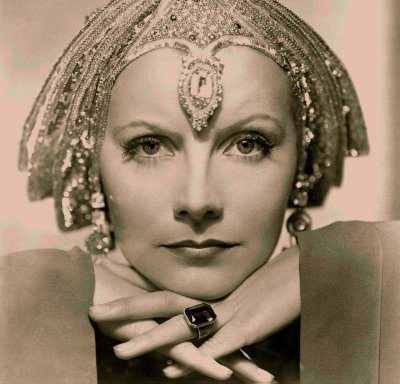
Her performance as the doomed courtesan in Camille (1936), directed by George Cukor, was called the finest ever recorded on film; her death scene with Robert Taylor was particularly memorable. She subsequently starred opposite Melvyn Douglas in the comedy Ninotchka (1939), directed by Ernst Lubitsch, which she herself seemed to enjoy making, and was one of her favourites.
Garbo was nominated for the Academy Award for Best Actress for Anna Christie (1930), Romance (1930), Camille (1937) and Ninotchka (1939).
Many of her fellow Hollywood actors and actresses were in awe of Garbo's talent.
"Her instinct, her mastery over the machine, was pure witchcraft. I cannot analyse this woman's acting. I only know that no one else so effectively worked in front of a camera." —Bette Davis
Greta Garbo was considered one of the most glamorous movie stars of the 1920s and 1930s. She was also famous for shunning publicity, which became part of the Garbo mystique. Except at the very beginning of her career, she granted no interviews, signed no autographs, attended no premieres and answered no fan mail.
Her famous byline was always said to be: "I want to be alone", spoken with a heavy accent which made the word 'want' sound like vont. This quote as noted comes from her role in Grand Hotel, however Garbo commented later, "I never said, 'I want to be alone.' I only said, 'I want to be left alone.' There is all the difference."
Garbo kept her private affairs out of the limelight. According to private letters released in Sweden in 2005 to mark the centenary of her birth, she was reclusive in part because she was "self-obsessed, depressive, and ashamed of her latrine-cleaner father."
Some also suggest that Garbo remained single in the United States because of an unrequited love for her drama school sweetheart, the Swedish actress Mimi Pollak. Garbo's personal letters recently released to the public indicate that she remained in love with Pollak for the rest of her life. When Pollak announced she was pregnant, Garbo wrote: "We cannot help our nature, as God has created it. But I have always thought you and I belonged together."
"Garbo's biographer Barry Paris notes that she was technically bisexual, predominantly lesbian, and increasingly asexual as the years went by", and it has been indicated that Garbo struggled greatly with her sexuality, only becoming involved with other women in affairs that she could control.
Her most famous heterosexual relationship was with actor John Gilbert. They starred together for the first time in the classic Flesh and the Devil (1927). Their on-screen "erotic intensity" soon translated into an off-camera romance and by the end of production Garbo had moved in with Gilbert. Gilbert is said to have proposed to Garbo at least three times though when a marriage was finally arranged in 1927, she failed to show up at the ceremony.
She was also linked romantically with actresses Marlene Dietrich, Eva Le Gallienne, Claudette Colbert, Joan Crawford, Louise Brooks, Ona Munson, with writer Salka Viertel, and had a long term and unstable affair with writer/poet Mercedes de Acosta from 1931 to 1944, which ended badly. [11] De Acosta reportedly loved her for the remainder of her life, although Garbo did not return that love.
BETTE DAVIS BABY JANE (1962)
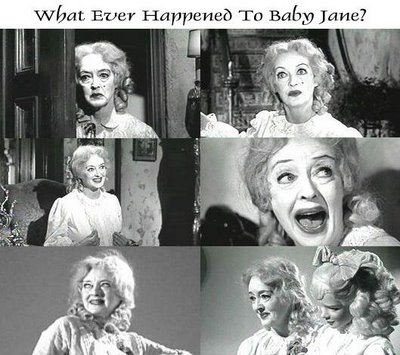
In 1961 she placed an advertisement for "job wanted" in the trade papers. Davis later observed that, although she intended it as a joke there was considerable truth in it and that, above all else, she simply wanted the opportunity to continue working.
Bette's performance in 1962's over-the-top What Ever Happened to Baby Jane?, directed by Robert Aldrich and co-starring long-time rival Joan Crawford, earned her another Oscar nomination. Her performance as a demented former child star living in a decaying mansion with her wheelchair-bound sister was a smash hit and a top-grosser that year.
Contrary to Hollywood legend asserting that Davis and Crawford engaged in a bitter feud during filming, Robert Aldrich commented that both actresses understood that their careers were at a crossroads and that the film may prove to be an important one for each of them, and therefore behaved with professional courtesy during filming. While touring the television talk-show circuit to promote the film, Davis told one interviewer that when she and Crawford were first suggested for the leads, Warner studio head Jack Warner replied: "I wouldn't give a plugged nickel for either of those two old broads." Recalling the story, Davis laughed at her own expense, but the following day, she reportedly received a telegram from Crawford: "In future, please do not refer to me as an old broad!" The ill feeling developed into a lifelong enmity when Crawford actively campaigned against Davis when the latter was nominated for an Academy Award. For the remainder of her life, Davis criticised Crawford for her behaviour.
Friday, August 04, 2006
“ARETHA FRANKLIN / “Wholy Holy””

I’m not a believer. But when I listen to songs like Mahalia’s “Come Sunday” or this week’s selection, Aretha’s cover of Marvin’s “Wholy Holy,” I understand why so many do believe. I feel the spirit.
Performing along with James Cleveland and the Southern California Community choir, Aretha sang this version of “Wholy Holy” in 1972, only one year after Marvin released his own version of the song as part of the What’s Going On suite. Aretha’s version is on her best selling Atlantic album, Amazing Grace.
Marvin performs his tune using the same passionate yet reserved style that Sister Mahalia uses for “Come Sunday.” Backed tastefully by strings and piano, Marvin sticks closely to the main melody—there’s very little in the way of vocal histrionics, very little of what they used to call ‘worrying the notes.’ The power of Marvin’s performance is in the lyrics and the awesome beauty of his clear, clean tenor
As for Aretha, you know she wasn’t going for any of that ‘tasteful’ and ‘reserved’ stuff. The pianist and choir begin with a brief, quiet intro, but the moment the pianist plays the first notes of the main melody, the audience breaks into applause. They know what’s coming. Aretha begins her performance with a five-syllable, scale-climbing enunciation of ‘holy’ and sings the word ‘power’ with so much passion and conviction you’d think it was onomatopoeia. We’re barely out of the first minute and Sister Girl has already kicked off her shoes and let down her hair. A couple of minutes later, the choir lets loose a series of those chair-rattling, rafter-raising ensemble notes (“Love. Love. Love! LOVE! LOVE! LOVELOVE! LOVELOVELOVE!!!”) that gospel choirs are known for; Aretha responds with a few of those so soulful and so perfect shrieks of her own. When the audience breaks into applause again, I feel like applauding along with them.
For me, what’s most interesting about this record is how similar it is—both in sound and execution—to Aretha’s love songs. Anyone familiar with Aretha’s music will recognize the choir’s angelic chants of ‘Holy’ as the type of thing that Caroline (Aretha’s sister and backup singer) usually does. Aretha too, sings Marvin’s devotional lyrics in exactly the manner she usually sings lyrics of love, longing and loss. The curious thing is how obvious it is that Aretha isn’t singing the gospel in the style of a love song; it was that she’d been singing her love songs for all these years in the style of the gospel. Listening to “Wholy Holy,” I can understand why church people were so incensed when Brother Ray created what we now call ‘Soul’ music by singing the blues with the passion, style and instrumentation of the Black church singing. Frankly, it seems almost sacrilegious. And like I said, I’m not even a belie There’s a place somewhere
Mtume, you may not be a believer in Christianity, but you are a believer, a believer in Black culture. At the center of our cultures (I use the plural because I am talking about the commonality found in diverse African heritage cultures and not just what is happening among those of us in the United States), at the center is an intense longing that often sounds like simple sadness, but is actually far, far deeper than woe-is-me, it be the sound of us longing to be whole again. Whether you taste it in Cape Verdean mourna or Brazilian saudade, or at its most pronounced in the blues and gospel of the USA’s deep south, there is this sound of worry-ation that pervades our musics.
Now, when you take that pervasive sound and push it through other styles of music you get a spirituality that can catch you by surprise, especially because within the United States a deep spirituality is ipso facto thought of as a believe in the Christian god, but it ain’t necessarily so, even though that’s the way we are most familiar with how spirituality go.
Which brings us to Aretha, I just want to share a Broadway show tune, “Somewhere,” which was written by Leonard Bernstein and Stephen Sondheim for West Side Story. You don’t have to know a thing about the recasting of the Romeo & Juliet story to appreciate how Aretha delivers the selection.
Aretha was obviously influenced by Mahalia Jackson, but she also had a bunch of Dinah Washington up in her, and as such she had a profound affinity for jazz (check out her piano solo to dig just how deep her jazz leanings were). “Somewhere” is from one of her jazz albums, Hey Now Hey (The Other Side Of The Sky) which was arranged and conducted by Quincy Jones who co-produced the album with Aretha. Additionally, and of major importance, during the early Seventies, Aretha consciously identified with the Black Cultural movement of that era. So here we have a pop tune filtered through jazz with a deep-spiritual/ conscious-political orientation. Just check it out. Beautiful. Enough said.
—Kalamu ya Salaam
Funny Girl (1968)

Rating: ****
Funny Girl succeeds thanks to Barbra Streisand's bravura performance, recapturing her star-making success on the Broadway stage. Though he wasn't known for directing comedies or musicals, director William Wyler ably helms the biographical tale of comedienne Fanny Brice; the storyline is as compelling as the musical numbers. Reportedly, Wyler and Streisand clashed frequently during the film's production, though the conflict doesn't show in the final product. Oscar-nominated Kay Medford is excellently cast as Fanny's mother Rose; there's even an on-screen appearance of the often-heard but seldom-seen Mae Questel, the voice of Betty Boop, among others. Though not the most comprehensive biography, Funny Girl is an entertaining musical, showcasing Streisand's unique talent and undeniable star power. The actress would score an unconventional Best Actress win for her work, tying with Katherine Hepburn for The Lion In Winter. Streisand and Medford became the 34th and 35th performers nominated for Oscars for work in a film directed by Wyler, a record which still stands. Richard Gilliam, All Movie Guide
Barbra Streisand was, at the time of the film's release, a voting member of AMPAS. When she found she was nominated, she, like any member nominated, voted for herself. If she hadn't, she wouldn't have tied with Katharine Hepburn for the year's Best Actress Oscar.
Several co-stars publicly blasted Barbra Streisand and director William Wyler for much of their scenes being cut in favor of focusing almost entirely on Streisand.
The final musical number, "My Man", was filmed "live" both to maximize Barbra Streisand's dramatic rendition and because she hated the lip-syncing process.
Columbia wanted to cast Shirley MacLaine as Fanny Brice. However Ray Stark who produced the Broadway show and was Brice's son-in-law, insisted on Streisand repeating her Broadway role.
Thursday, August 03, 2006
BARBRA STREISAND

Extraordinary claims about Streisand's sex life.
An unauthorised biography of Barbra Streisand alleges the singer has had more than her fair share of celebrity sexfests in her day.
In his new book, Barbra: The Way She Is, Christopher Anderson alleges Streisand notched up many big names on her star-studded belt, including Prince Charles, Dodi Fayed, Andre Agassi and Bill Clinton.
Other alleged former conquests include Warren Beatty, Ryan O'Neal, Steve McQueen, Kris Kristofferson, Don Johnson, Jon Voight, Elliott Gould, Richard Gere, Omar Sharif and Liam Neeson.
Anderson says the 63-year-old actress is "cheap", prone to huge tantrums and has a "Maria Callas-sized ego".
Streisand was also allegedly banned from the White House by first lady Hillary Clinton after she discovered the singer had stayed the night while she was away and Bill Clinton remained at home.
According to the New York Post, Anderson also claims that Streisand had such a deep-rooted fear of being assassinated for her outspoken support for Israel, that, when she staged a concert about the time of the Six-Day War in 1967, she spent the time weaving around the stage trying to make herself a more difficult target for any sniper attack.
ANN-MARGRET
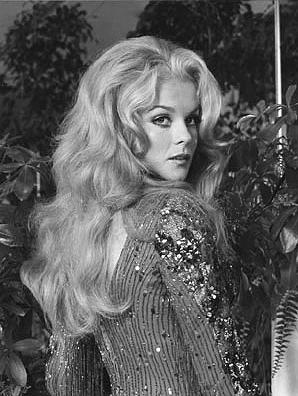
In 1971, she starred in Mike Nichols's Carnal Knowledge, marking a change from her sex-kitten musical roles, garnering a nomination for the Academy Award for Best Supporting Actress. The following year, while performing at Lake Tahoe, Nevada, she fell 22 feet from the stage and suffered injuries that put her out of commission for several months. Throughout the 1970s, Ann-Margret balanced her live performances with a string of critically acclaimed dramatic film performances that played against her glamorous image, including Tommy in 1975, for which she was nominated for the Academy Award for Best Actress. In addition, she has been nominated for ten Golden Globe Awards, winng five times including Best Actress for Tommy. She also did a string of successful TV specials, starting with The Ann-Margret Show for NBC in 1968. Now in her mid-60s, she continues to act in movies.





